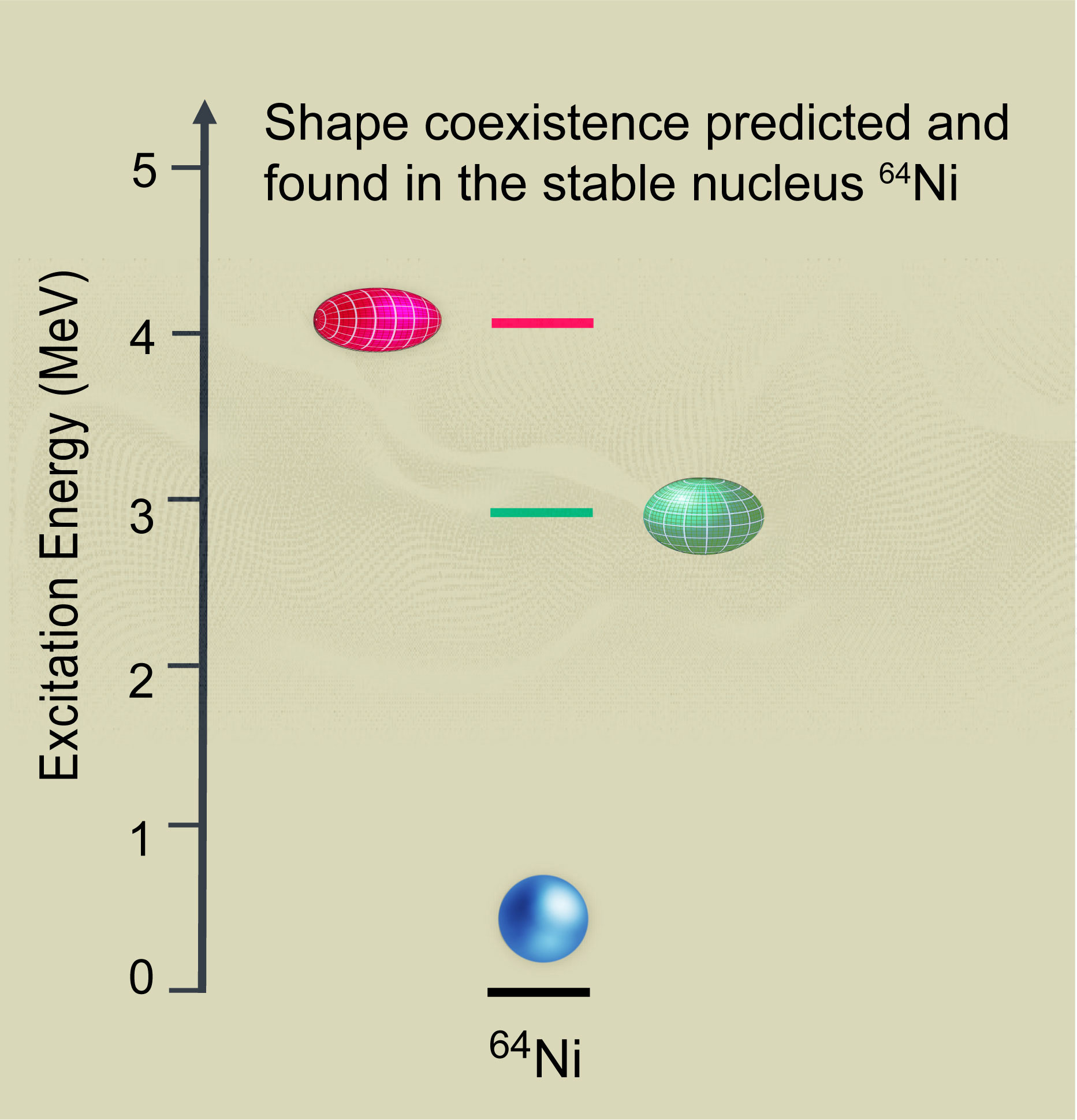
Stable Nickel-64 Nuclei Take Three Distinct Shapes
Scientists track down coexistence of multiple shapes in the Nickel-64 nucleus: a spherical ground state and elongated and flattened shapes.

Scientists track down coexistence of multiple shapes in the Nickel-64 nucleus: a spherical ground state and elongated and flattened shapes.
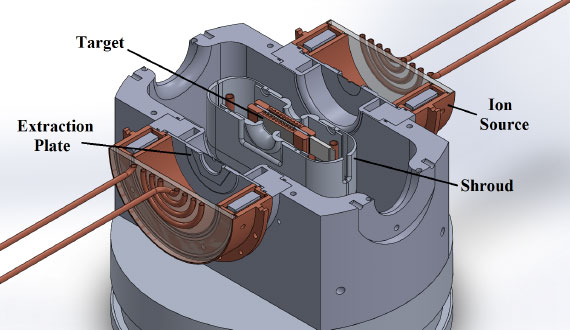
New measurements provide insights for geochronology and reactor design.
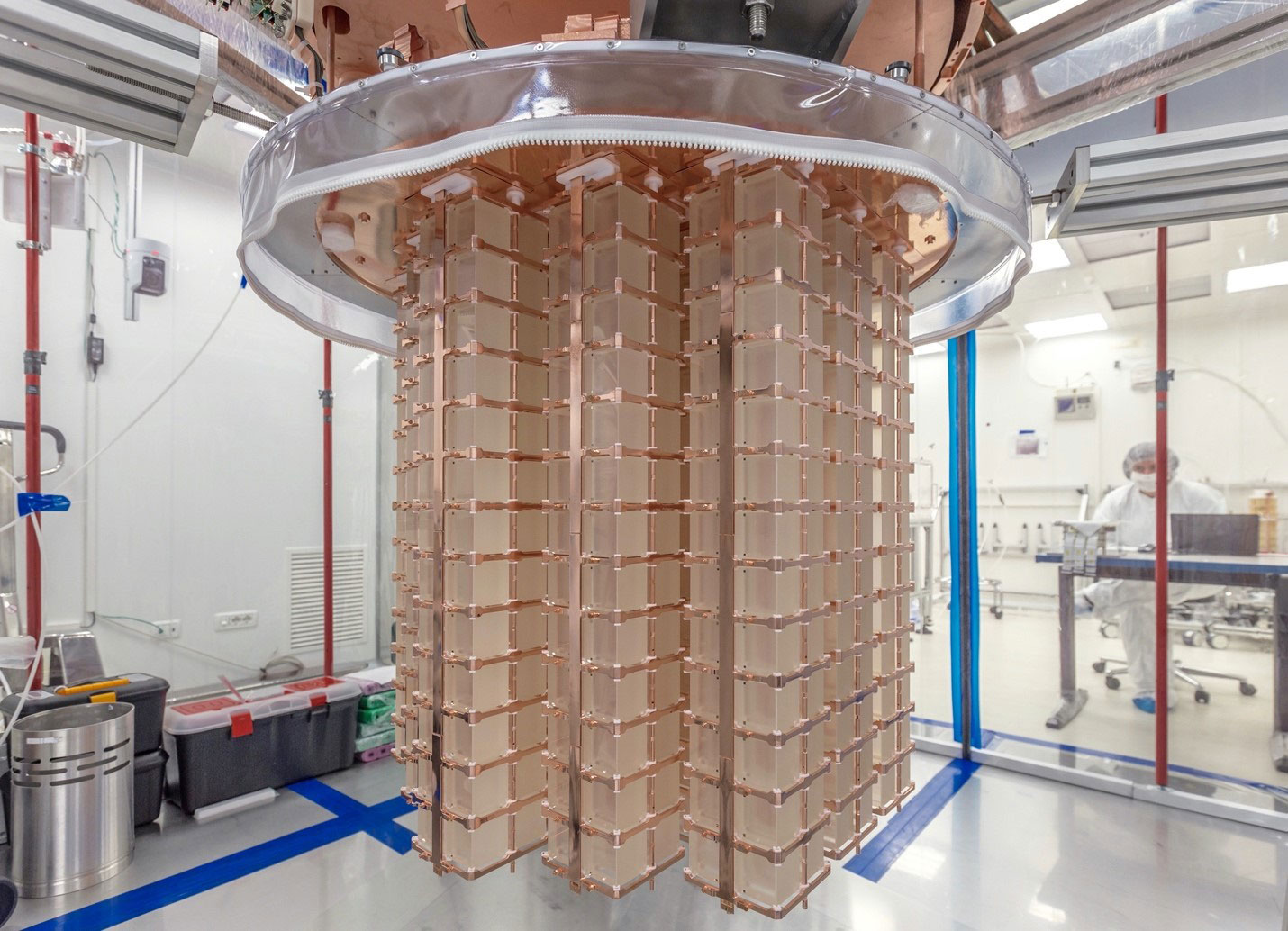
Nuclear physicists narrow the search for a rare nuclear decay that can explain the origin of matter in the universe.
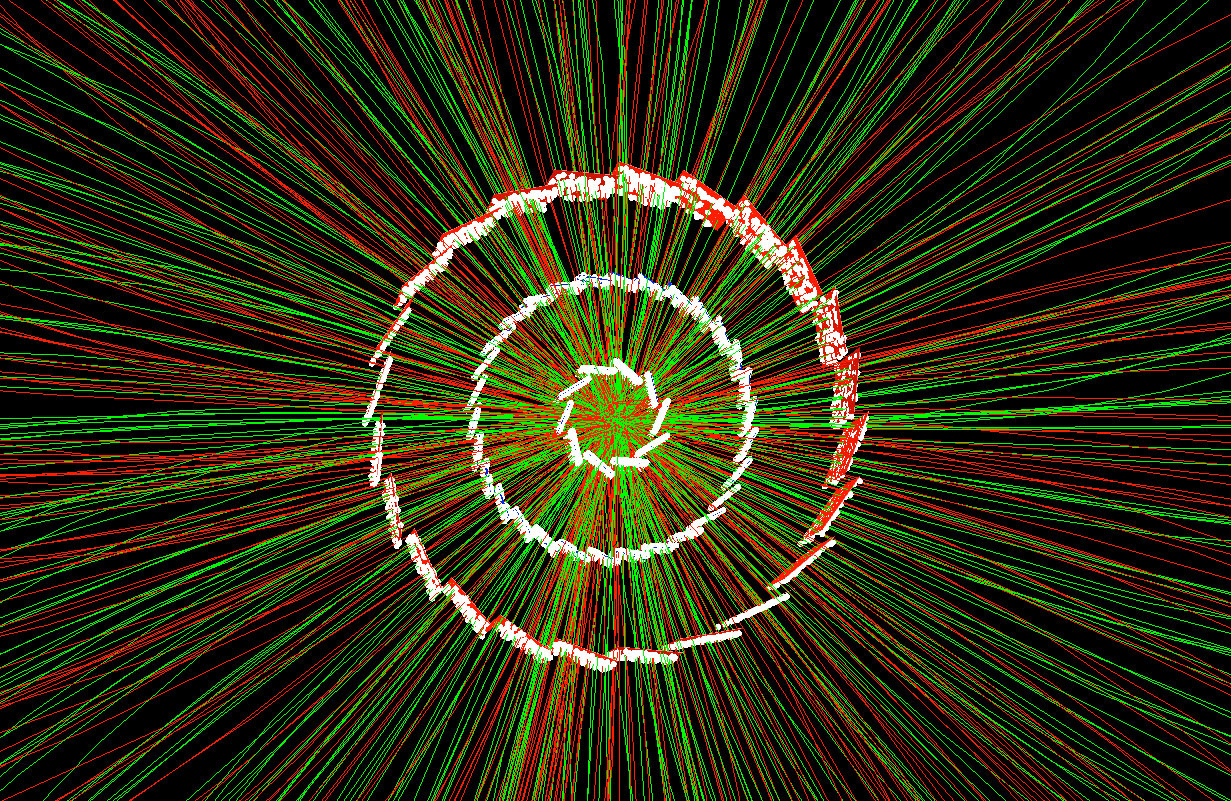
Tracking particles containing charm quarks offers insight into how quarks combine.
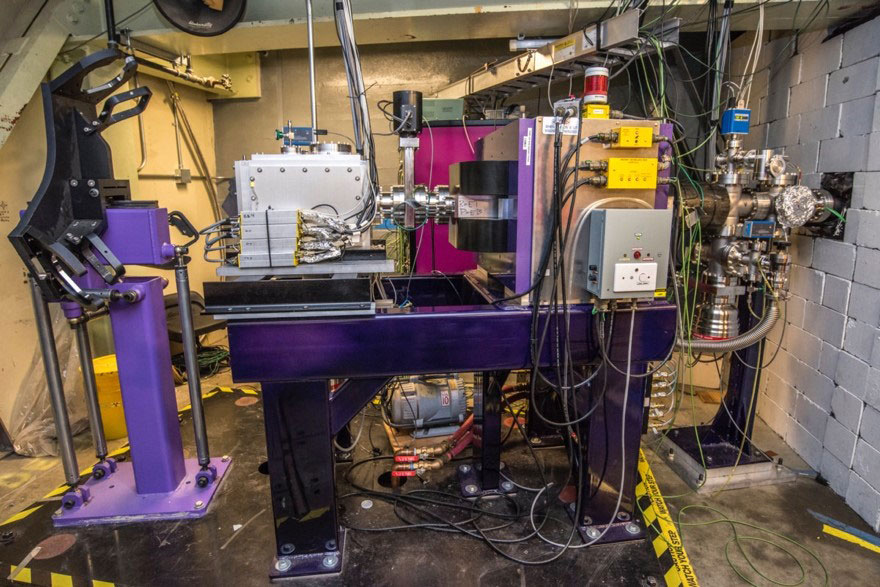
Scientists discovered the lightest isotope of mendelevium thanks to the direct measurement of its mass number.
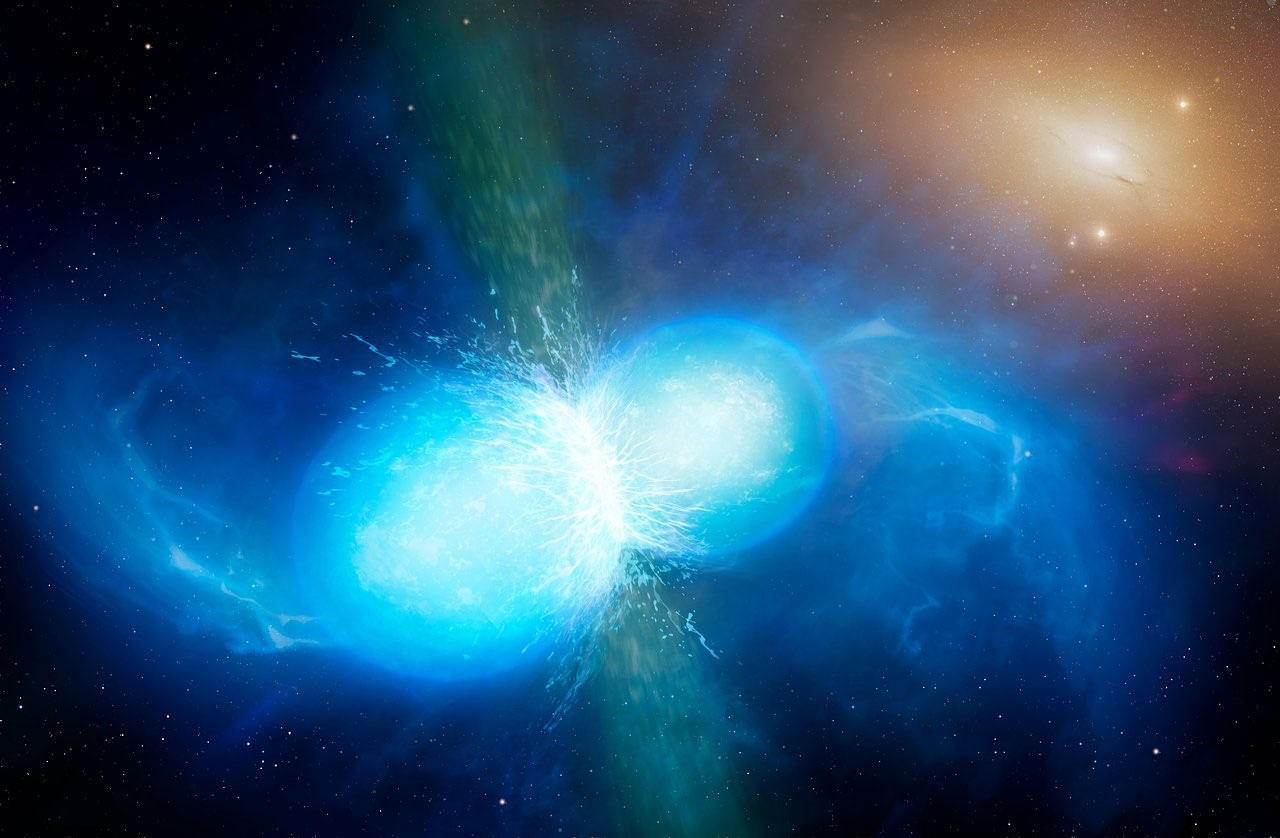
Data from the first observation of a neutron-star collision combined with input from modern nuclear theory narrow the range of neutron star radii.
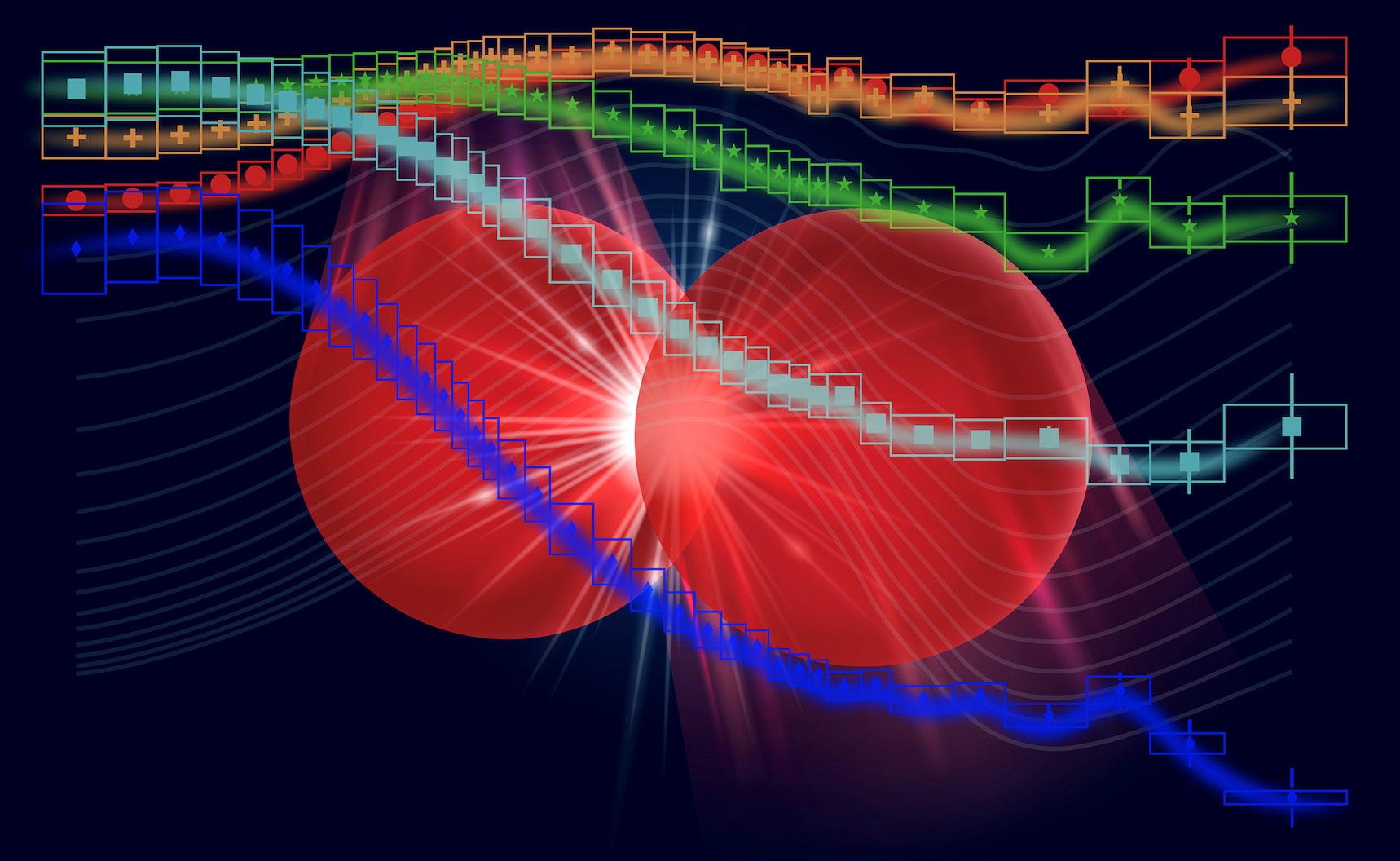
A new analysis provides a clearer picture of the universe by considering the yield of fast particles in grazing versus head-on nuclear collisions.
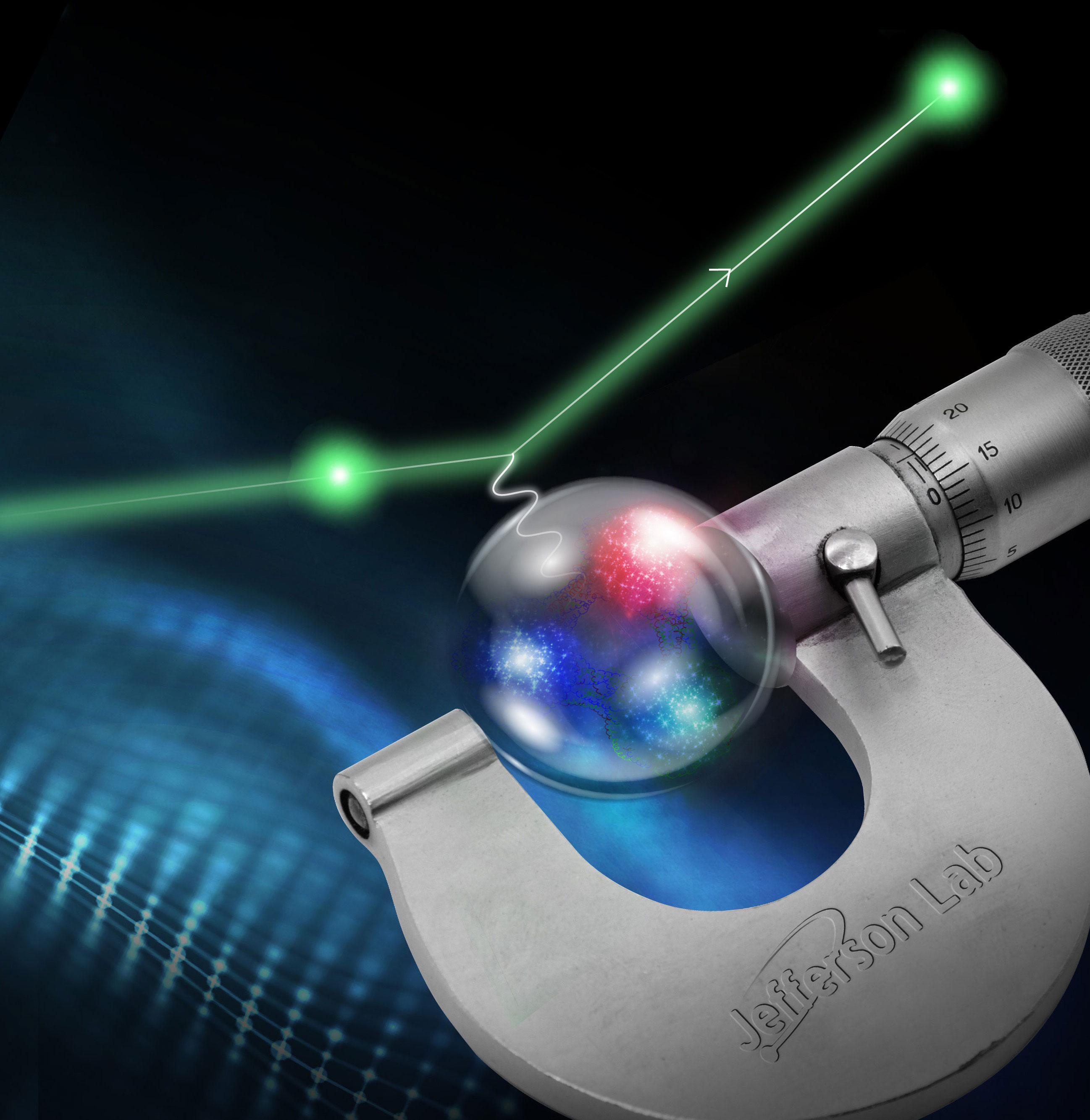
Physicists get closer to solving the proton radius puzzle with unique new measurement of the charge radius of the proton.
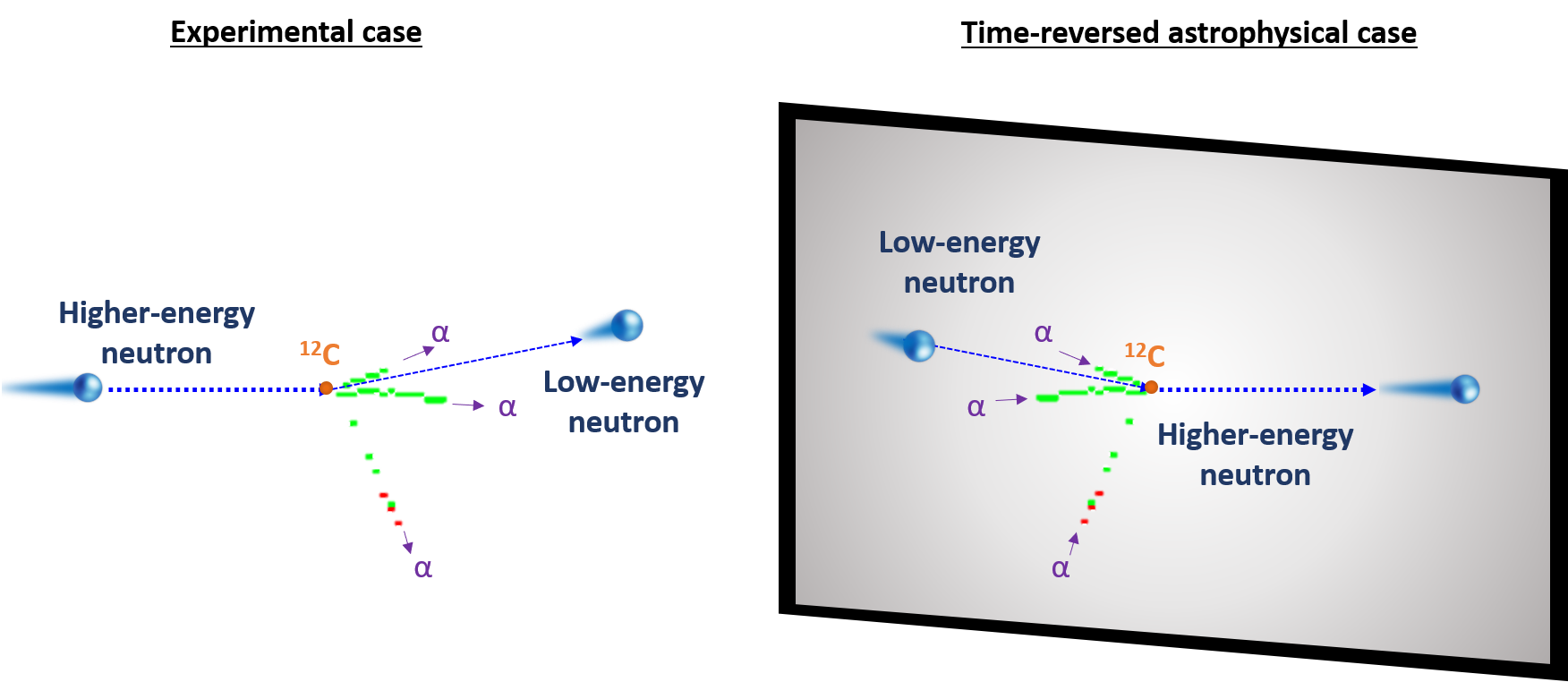
Studying nuclear reactions using a Time Projection Chamber allows scientists to study stars’ internal processes.
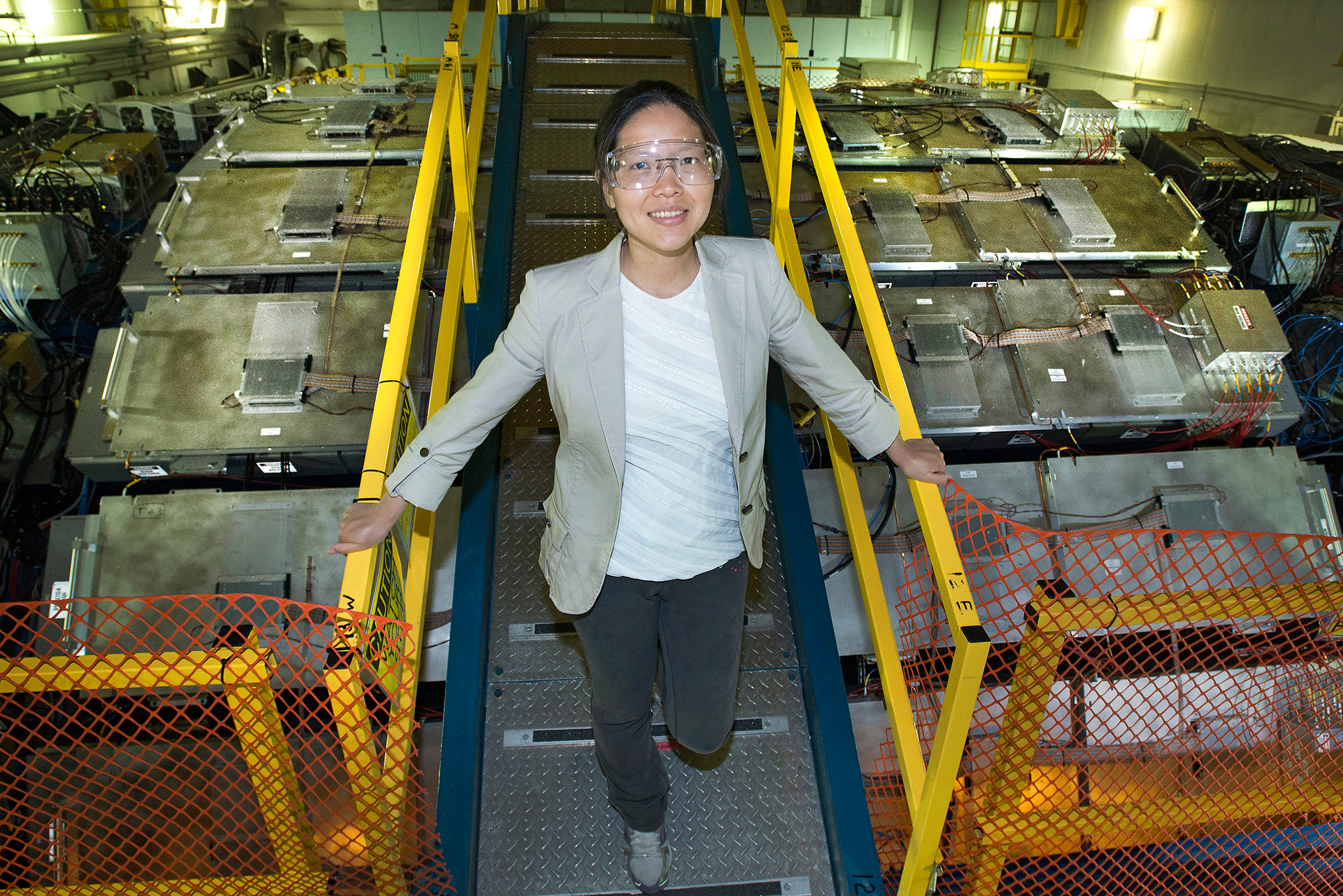
New measurements offer insights into binding interactions that glue fundamental building blocks of matter together.
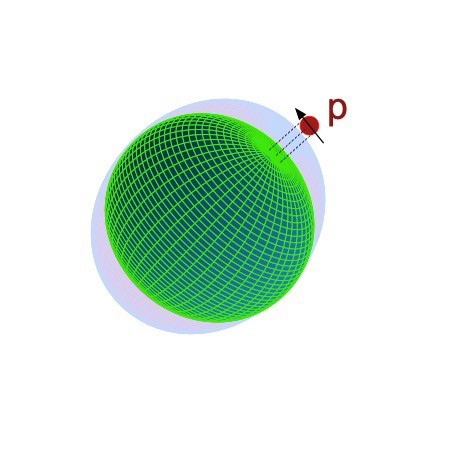
Measurements of the electromagnetic properties of radioactive antimony-129 provide unique insight into the nature of the proton-neutron interaction and nuclear shapes.
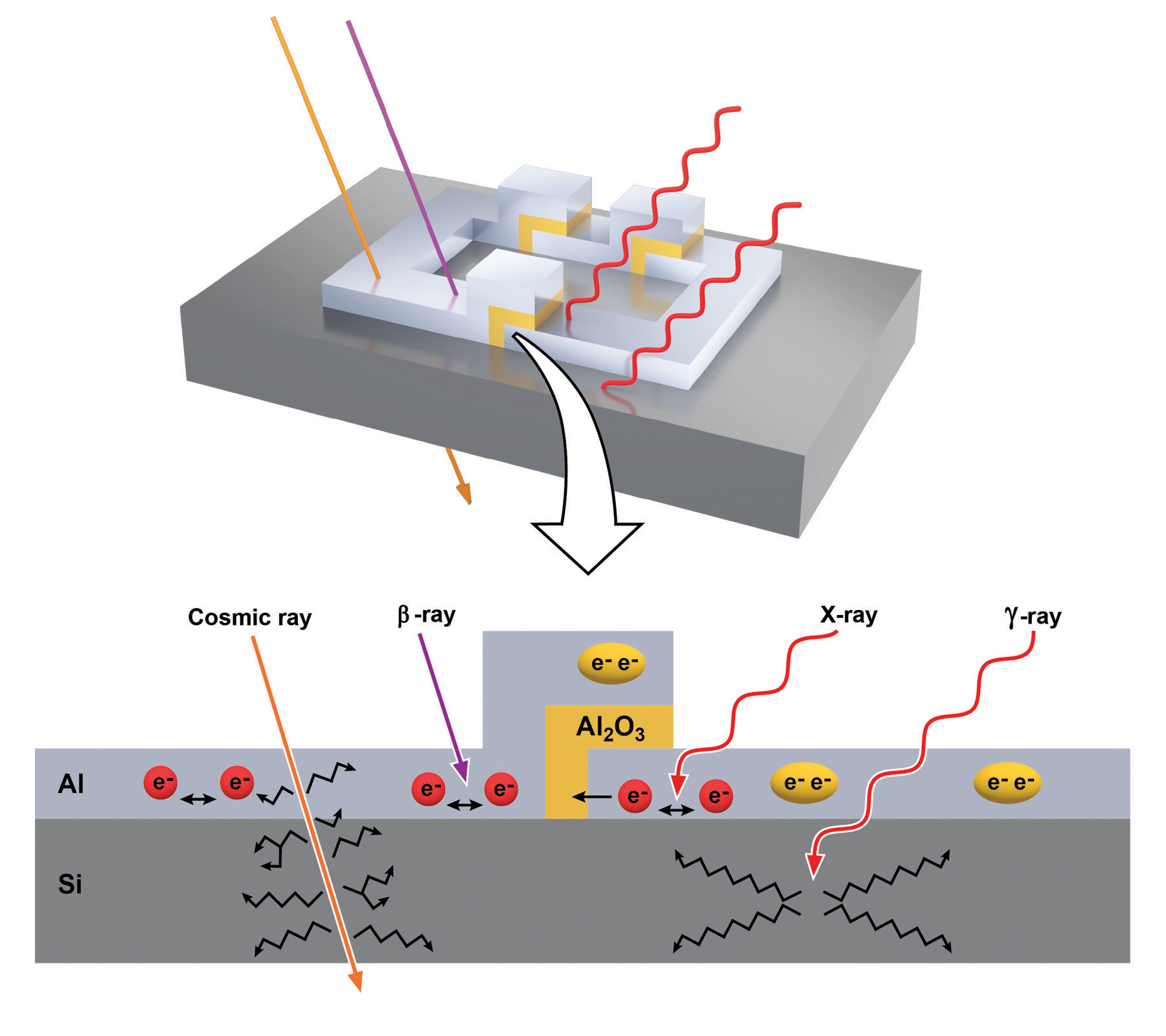
New experiments demonstrate the correlation of natural radiation, unpaired electrons, and decoherence in superconducting qubit devices.